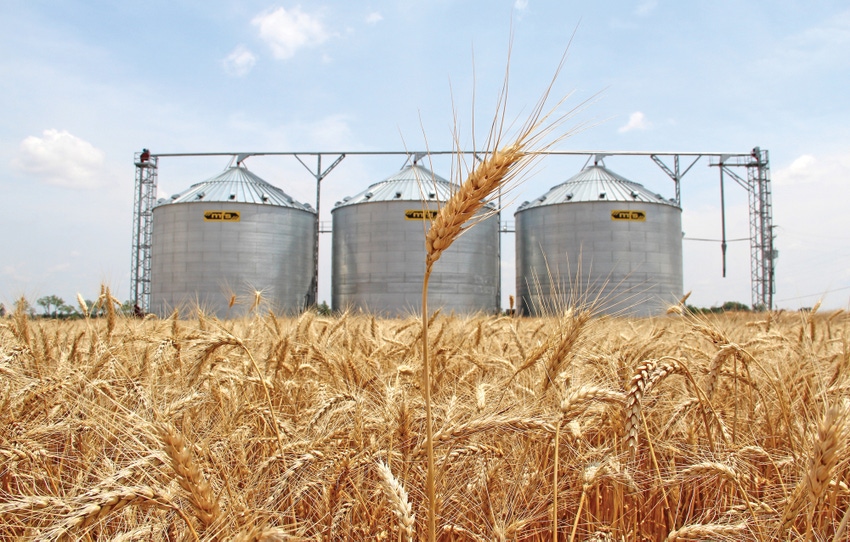
Grain analyst Randy Martinson of Progressive Ag, speaking at a press briefing at the Minneapolis Grain Exchange said the high price of corn means lower wheat exports and higher domestic feed use for wheat.A good quality winter wheat crop closed the gap on the premium between spring wheat and winter wheat, Martinson noted. “Wheat was wheat this year. They didn’t need high protein to blend with the winter wheat.”

USDA’s October supply and demand estimates indicate that livestock producers will look to cheaper substitutes for high-priced corn, which should result in stronger demand for wheat.
“We saw an increase of about 95 million bushels in feed use for wheat, and a 50-million bushel decline in exports, said, grain analyst Randy Martinson of Progressive Ag, speaking at a press briefing at the Minneapolis Grain Exchange. “Because of the high price for corn, we’re not going to export the wheat, we’re going to feed it.”
In its October estimate, USDA increased production of spring wheat by about 42 million bushels. Total supply has increased by about 47 million bushels, implying about 5 million bushels of imports.
Domestic use for spring wheat was increased by 45 million bushels, so stocks for spring wheat only increased by 2 million bushels. “That’s not too bad considering we saw production go up as much as we did,” Martinson said.
Martinson noted that a good quality winter wheat crop closed the gap on the premium between spring wheat and winter wheat. “Wheat was wheat this year. They didn’t need high protein to blend with the winter wheat and that pulled that premium away.”
Martinson believes that spring wheat and wheat in general “is going to have to continue to rally in the market. I was a little disappointed that we didn’t see a decrease in Russia’s production, with their drought. We need to keep an eye on Western Australia, but I’m friendly wheat. Wheat has some opportunity to forge forward.”
World wheat production numbers “came in a little bit neutral,” Martinson said. “The demand side came in very friendly, which is helping that market.”
Australia’s estimated wheat production was cut by about 1.2 million metric tons and Canada’s by about 1.1 million metric tons. There was no change in estimated wheat production in the Black Sea region of the former Soviet Union. “This means we may not see export bans from that region,” Martinson said.
USDA’s corn estimates left most observers a little confused, according to Martinson. “USDA didn’t do what anybody expected. They raised planted acres by 500,000 acres and increased harvested acres by 300,000. Yields decreased (down 0.8 bushels), but everyone was expecting yields to go up. Beginning stocks were down by 193 million bushels, but in all we saw production drop by about 21 million bushels. With the lower production and lower stocks coming in, we saw supply drop by about 214 million bushels.”
USDA cut corn exports, “which was expected because corn exports haven’t been holding up. But in the end, USDA projected an ending stocks reduction, which was not expected by the trade, at least not to the tune of 114 million bushels (to 619 million bushels). It was a friendly report because of the increase in demand and lower stocks. That’s what’s helping support the corn market.”
In soybeans USDA hiked both harvested and planted acres by 1.1 million acres. USDA increased yield, which was expected by everyone in the trade, by 2.5 bushels, to 37.8 bushels. Beginning stocks went up 39 million bushels, which was also expected.
An increase in production of 226 million bushels pushed supply up by 265 million bushels, “which should’ve been a bearish number. But that was completely offset by an increase in crush of 40 million bushels and an increase in exports of 210 million bushels, with most of that going to China. So we saw soybean demand increase by 250 million bushels in the October report.”
Soybean production for Argentina and Brazil were left unchanged by USDA. Martinson notes that those crops are going in and have received some rain.
“The October report was probably most favorable for wheat, with little change in forecast production and an increase in demand, which brought stocks down. We also didn’t see changes in the world numbers which was a little bit helpful.”
Martinson believes the soybean market is going to now be more demand-driven. “We are seeing an increase in demand and if that pattern continues, we definitely have put in a low and this market has to go higher to ration the supply that is left.
“Soybeans never got high enough to ration supply. We were selling soybeans just as aggressively at $17 per bushel as we are now. Corn did do some demand destruction. It’s going to be tough to get corn back up to its old high because of that.”
About the Author(s)
You May Also Like





